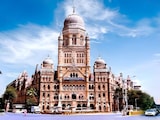- Subhash Chandra was rescued alive after being trapped under debris for nearly 30 hours
- Cloudburst on August 14 killed 60 and injured over 100 in Chisoti village, Kishtwar district
- Around 200-300 pilgrims were present at the langar when flash floods struck the area
In the wooded valleys of Kishtwar, people often recall an age-old saying in the Dogri language which roughly translates to ''Whom Mata Machail protects, none can harm." Nowhere did this faith ring truer than in Chisoti village during rescue operations on Friday.
Amid the devastation caused by the cloudburst, Subhash Chandra, who had been running a langar for Mata Machail pilgrims, was rescued alive after being trapped under debris for nearly 30 hours.
"Whom God saves, no one can kill is a saying here. Subhash, who has been serving devotees for so many years, feeding them selflessly, was protected by Mata herself," said Leader of Opposition Sunil Sharma, who had been overseeing the rescue operations in the village.
He said that it is a matter of great happiness that Subhash will again be able to set up the langar and serve Mata's devotees. "The greatest gift of his life is that Mata saved him." Union Minister Dr Jitendra Singh, at a press conference in Jammu, also mentioned about Subhash's rescue and said "he came out alive. He was part of those running langar". Singh said when the cloudburst-triggered flash floods struck the village on August 14, an estimated 200-300 pilgrims were in the langar and about 1,000 to 1,500 were in the area.
Subhash, from Udhampur, has long considered serving the devotees of Mata Machail his duty. Every pilgrimage season, he, along with his other colleagues, used to set up a langar (community kitchen) to feed thousands of weary yatris who trekked through the rugged mountains.
His langar, where hundreds of devotees were being fed daily, was swept away when flash floods occurred in the afternoon. Many pilgrims at the site were buried under logs and rubble.
Rescue teams of the Army, police, NDRF, SDRF and local volunteers were clearing debris near the langar on Friday when they discovered him alive. Four bodies, which were lying around Subhash, were also recovered from the same spot.
"This is the first time in the operation that someone has been rescued alive. It feels like nothing short of a blessing," an Army official said.
On Saturday, four more people were rescued alive.
"This gives hope that some more may still be alive under the debris," Sharma said, thanking the Army and others involved in the operation.
After being rescued, Subhash was admitted to the hospital and later shifted to the Kishtwar district hospital for specialised treatment. He was eventually discharged as his injuries were not serious, Naib Tehsildar Sushil Kumar said.
Locals hailed his survival as divine intervention, saying that his years of service to pilgrims had been rewarded.
On August 14, the langar turned into the epicentre of unimaginable devastation when the cloudburst struck and torrents of water and debris swept through it. Survivors, many of them injured and in shock, estimate that nearly 200 to 300 people were present there, making it one of the deadliest tragedies in the region in decades.
The disaster hit Chisoti - the last motorable village en route to the Machail Mata temple - at around 12.25 pm, leaving 60 people dead and over 100 others injured.
So far, 82 people - 81 pilgrims and one CISF personnel - are reported missing after the cloudburst-induced flash floods hit the village in Padder sub-division of Jammu and Kashmir's Kishtwar district on Thursday afternoon. Jammu, Udhampur and Samba districts accounted for the highest number of 60 missing people.
The deluge flattened a makeshift market, the langar and a security outpost. At least 16 residential houses and government buildings, three temples, four water mills, a 30-metre-long bridge and over a dozen vehicles were also damaged in the flash floods.
The annual Yatra, which began on July 25 and was scheduled to conclude on September 5, remained suspended for the third consecutive day on Saturday. The 8.5-kilometre trek to the 9,500-foot-high shrine starts from Chisoti, which is located about 90 km from Kishtwar town.
(Except for the headline, this story has not been edited by NDTV staff and is published from a syndicated feed.)













